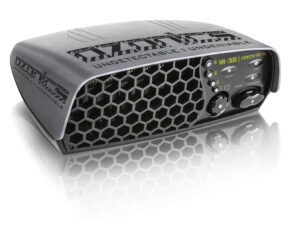by Glenn Walker
My dad is old school, so naturally when I showed him the spot where I killed my buck, he was a bit surprised. “What… that doesn’t make sense, the west wind had to be at your back the entire time…” I spent the rest of the afternoon doing something I haven’t had much chance to do, educating my dad.
More and more, advanced hunters are setting up their stands, not thinking of how they as hunters will use the wind, but rather, how will the buck use the wind? The more I hunt, read, and talk with other like-minded whitetail addicts, one thing continues to become clear- mature bucks prefer to travel with the wind quartering into their face. Old timers like my dad understand that whitetails live and die by the wind, comparing their #1 sense for survival to a human’s sight. That being said, we are also realizing that the sage advice of “sitting with the wind in your face” isn’t always the perfect solution.
Sitting with the wind at your back! Or in your ear! That’s crazy… right?! Crazy like a fox… with the help of Ozonics.
The Setup
No stand setup is ever perfect, and in fact, many are a gamble. I like to set my stands with a specific purpose. Maybe I’m looking for the right wind, temperatures, time of day, rut phase, etc… Look for a stand where you have the odds stacked in your favor, for that wise old buck to make his fatal move. The problem, this could go really wrong. The disastrous part is when the buck hears you coming in, or doesn’t walk exactly where you thought, and possibly winds you. One of my personal favorite stand setups is downwind of a thick doe bedding area, yet up above a nasty, steep drop-off to a swamp. Over the years this setup has worked well because in the right wind conditions, the bucks will scent check the bedding area from downwind, which means I am safe. But… at the same time, in the morning, with the thermal effect creating rising air off the slope, theoretically the buck can smell everything below him as well. In the evening, not a big deal, any scent I’m giving off will drop down into the uninhabitable swamp. But what if there’s deer in the swamp? Or what if he’s only showing up on my cameras in the morning? Or at night? Or… There is so much out of the hunter’s control, now you can see where Ozonics comes in. Ozonics is the missing link in a scent free hunting plan.
Utilizing Ozonics
Scientifically proven to eliminate odors, ozone generating Ozonics can easily be utilized as soon as you step out of the truck. With the new Kinetic Backpack, your Ozonics unit can be used effectively while you quietly sneak in and out of your stand. And then, when on stand, remove the unit from the pack and place it in the tree or blind like you normally would. If you’re not already using Ozonics, or familiar with the science and their impressive results, be sure to visit their informative website at www.ozonicshunting.com to learn.
My good friend Tom Nelson, host of Cabela’s American Archer, is a loyal Ozonics disciple. Tom finds his perfect setup often by setting up a ground blind, where Ozonics is incredibly effective. “I utilize ground blinds in a lot of spots where no suitable trees are available. The trouble with ground blinds is that it is much harder to monitor the wind direction while enclosed within them. I make a point to check the wind direction every 30 minutes while hunting and adjust my Ozonics and the blind windows accordingly.” Nelson also added, “Before I even raise my bow up into my stand, or nock an arrow in my blind, I turn on my Ozonics. More than once I have had deer show up almost immediately, and had I not had the Ozonics turned on, I am sure I would have spooked the deer and ruined a good part of my hunt.
Don’t be limited this fall. Remember that the wind is the deer’s best friend, and with the help of Ozonics, you can find the perfect setup to exploit that wise old buck’s habits one last time. As always, good luck, be safe, have fun, and send us pictures of your giant buck!
Photos by Bill MCall
